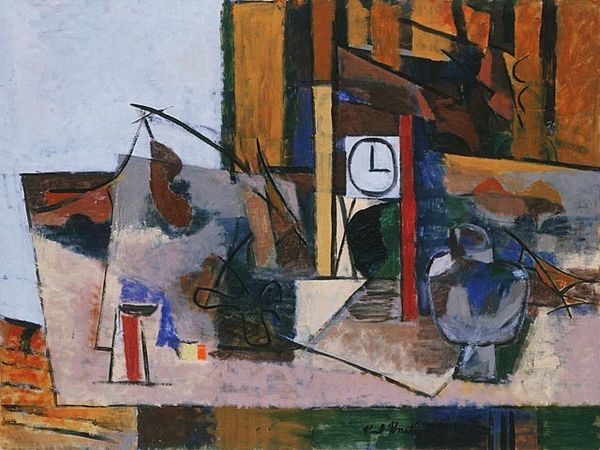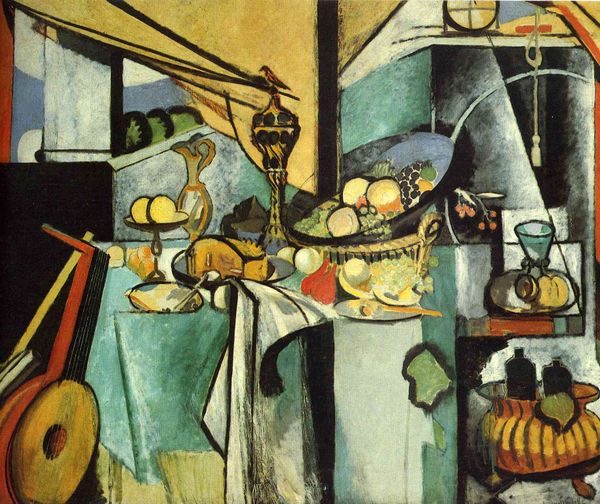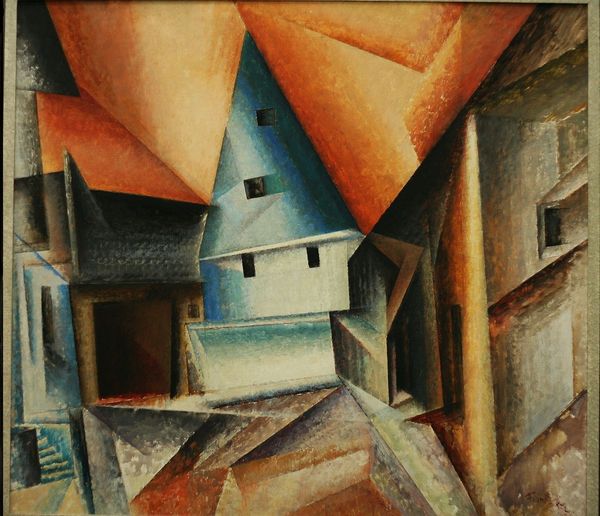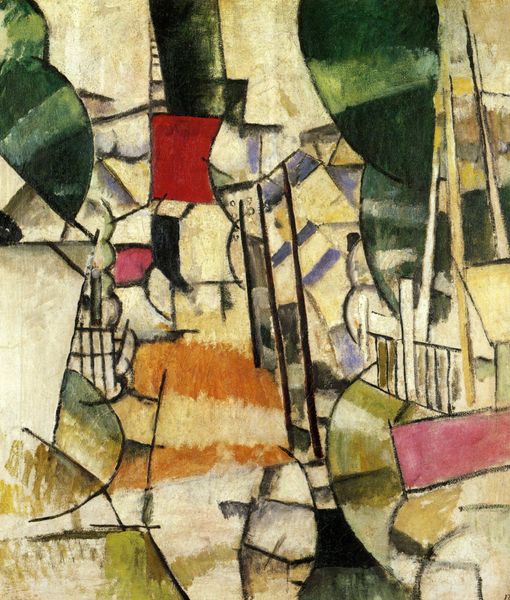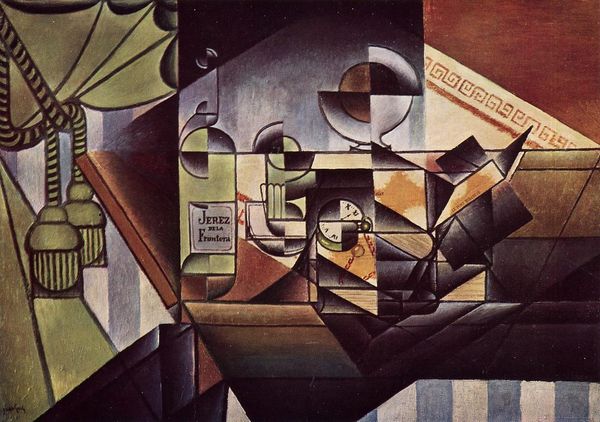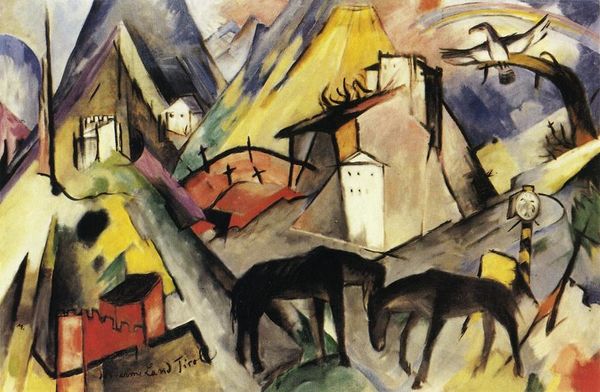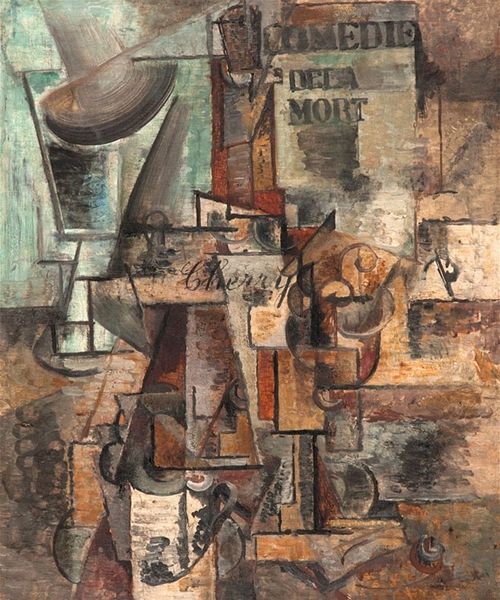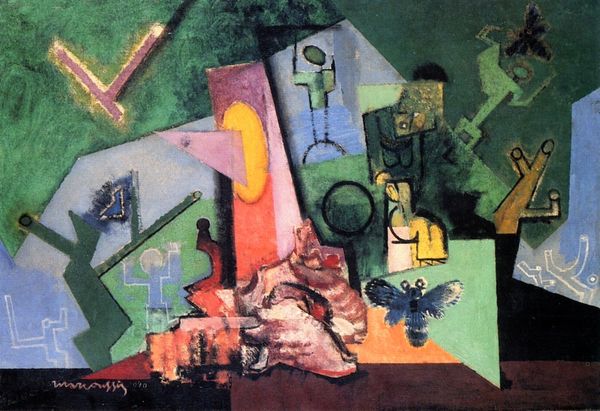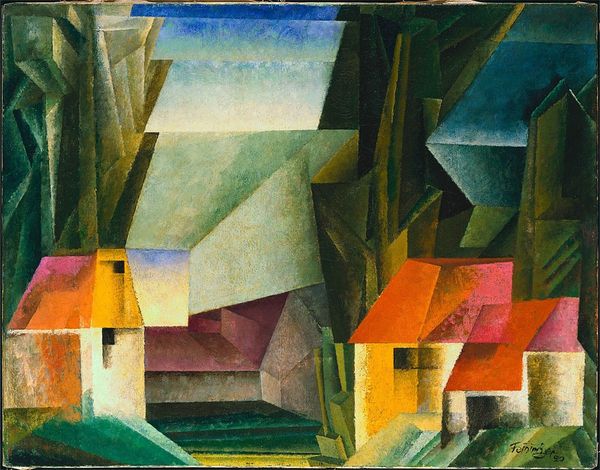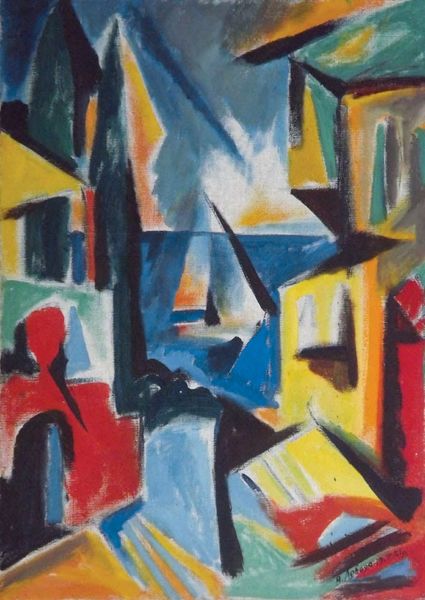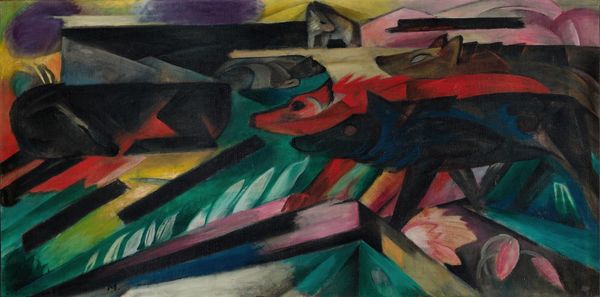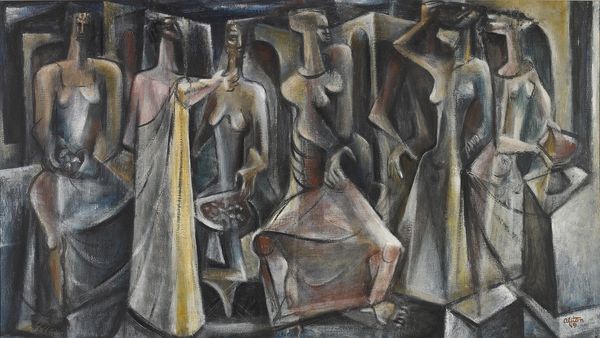
painting, oil-paint
#
cubism
#
art-nouveau
#
painting
#
oil-paint
#
form
#
coloured pencil
#
geometric
#
underpainting
#
abstraction
#
cityscape
Copyright: Public domain
Curator: Here we have Amadeo de Souza-Cardoso's, "The kitchen in the house Manhaus," a work created circa 1913, using oil paint. Editor: Immediately, I feel a sense of interiority, of fragmented domesticity. The color palette is very muted, almost sepia-toned, which creates a shadowy and perhaps slightly melancholic mood. Curator: Absolutely. Souza-Cardoso was at the forefront of modernist movements in Portugal, and this painting, even in its abstraction, reveals an interest in rendering a familiar space, albeit in a very fractured way. Consider the time period – pre-war Europe was a hotbed for questioning conventions, a society that was struggling to keep traditional values alive as new values appeared on the horizon, as art became the expression of these questioning times. Editor: And you see that tension visualized here. The subject – a kitchen, traditionally a female-coded space of labor and nurture – is completely disrupted. The geometric forms don’t cohere into a recognizable, functional room. It makes me think about how gender roles and the very structure of home life were being destabilized in that era. Was he consciously responding to shifts in these values? Curator: Likely so. Artists of his generation engaged deeply with such cultural shifts. We need to also remember the influence of Cubism, where multiple perspectives are presented simultaneously to show form. But he was not a passive follower. Souza-Cardoso blended Cubist strategies with influences of Futurism and Art Nouveau to forge his unique vocabulary. Note the curving lines juxtaposed with sharp angles – it's not just about the object but also about the dynamism of perception. Editor: Right, it isn’t merely descriptive; there’s a political undercurrent to this stylistic choice. Souza-Cardoso challenges the viewer not only to re-imagine how we define representation, but how power structures control it. Who is he representing this space and on what ground? Curator: Precisely! This work becomes a fascinating example of how modernist painting intersected with evolving societal discourses around domesticity, gender, and Portugal’s own cultural identity in relationship to Europe. He gives importance to these common environments as being equally worthy of becoming an artwork, elevating everyday lives and making a point on democratisation of the subject matter. Editor: When you see a painting like this you ask yourself what is actually worth representing in our current day. Is this abstraction merely playing around with styles, or actually holding deep interrogations about its subject? And that’s where the gold lies. Curator: I agree; this work continues to spark valuable conversations. It prompts us to continuously question how art mediates our experience and understanding of the world around us.
Comments
No comments
Be the first to comment and join the conversation on the ultimate creative platform.
